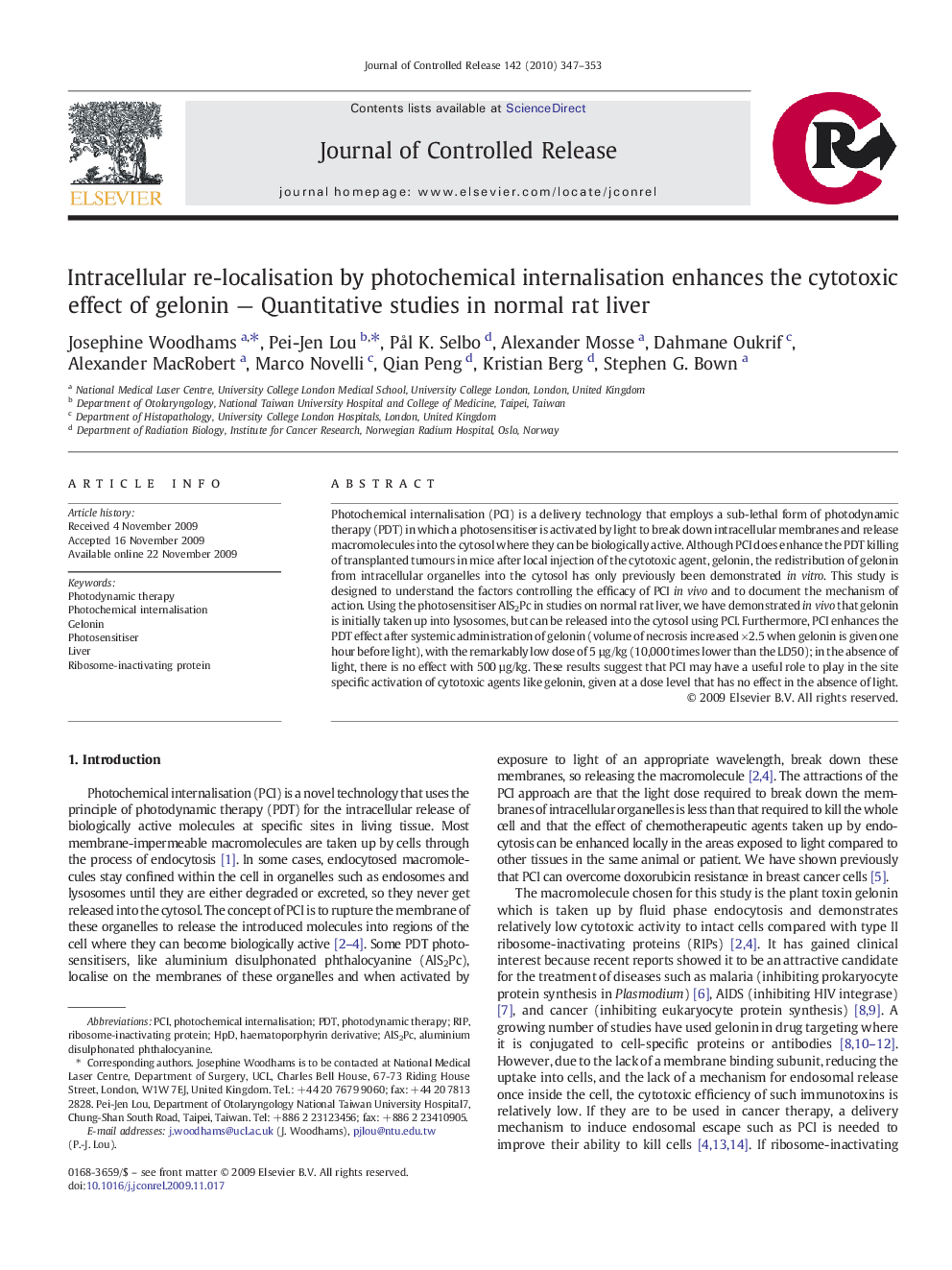| Article ID | Journal | Published Year | Pages | File Type |
|---|---|---|---|---|
| 1425674 | Journal of Controlled Release | 2010 | 7 Pages |
Photochemical internalisation (PCI) is a delivery technology that employs a sub-lethal form of photodynamic therapy (PDT) in which a photosensitiser is activated by light to break down intracellular membranes and release macromolecules into the cytosol where they can be biologically active. Although PCI does enhance the PDT killing of transplanted tumours in mice after local injection of the cytotoxic agent, gelonin, the redistribution of gelonin from intracellular organelles into the cytosol has only previously been demonstrated in vitro. This study is designed to understand the factors controlling the efficacy of PCI in vivo and to document the mechanism of action. Using the photosensitiser AlS2Pc in studies on normal rat liver, we have demonstrated in vivo that gelonin is initially taken up into lysosomes, but can be released into the cytosol using PCI. Furthermore, PCI enhances the PDT effect after systemic administration of gelonin (volume of necrosis increased ×2.5 when gelonin is given one hour before light), with the remarkably low dose of 5 µg/kg (10,000 times lower than the LD50); in the absence of light, there is no effect with 500 µg/kg. These results suggest that PCI may have a useful role to play in the site specific activation of cytotoxic agents like gelonin, given at a dose level that has no effect in the absence of light.
Graphical abstractPhotochemical internalisation enhances photodynamic therapy efficacy after systemic administration of gelonin.Figure optionsDownload full-size imageDownload as PowerPoint slide
